What to Eat in Morocco: Traditional Food Guide
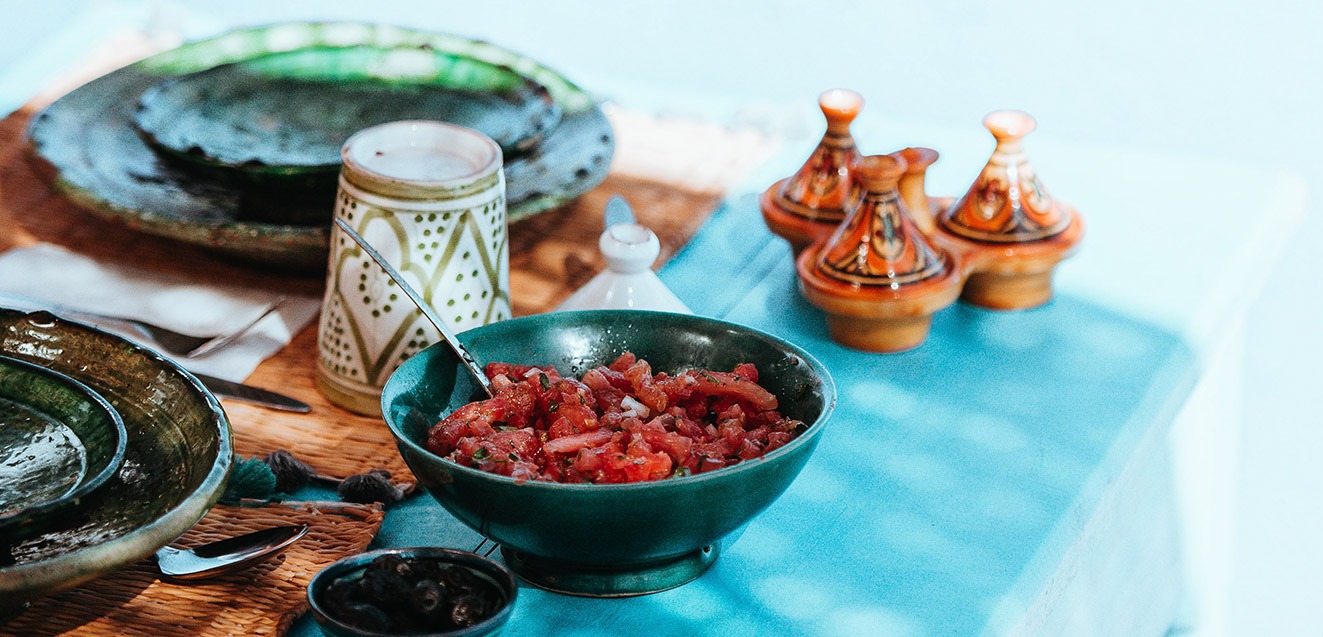
Morocco’s Culinary Wonders
Tucked away in the upper reaches of northwest Africa, where the boundless waters of the Atlantic Ocean and the Mediterranean Sea meet, sits Morocco: a storied country brimming with age-old casbahs, desert caravan routes, and a plethora of good food. Moroccan cuisine is a blend of African roots and European influence—a multicultural fare that includes elements of French, Berber, and Moorish cooking, resulting from the country’s strategic location and role as an international trading center. The spiced scents of saffron and nutmeg mix with the soothing aroma of mint tea along the narrow alleyways of enticing Moroccan cities like Fès and Marrakech, while almond, olive, and orange trees grow plentiful in the country’s vast agricultural regions.
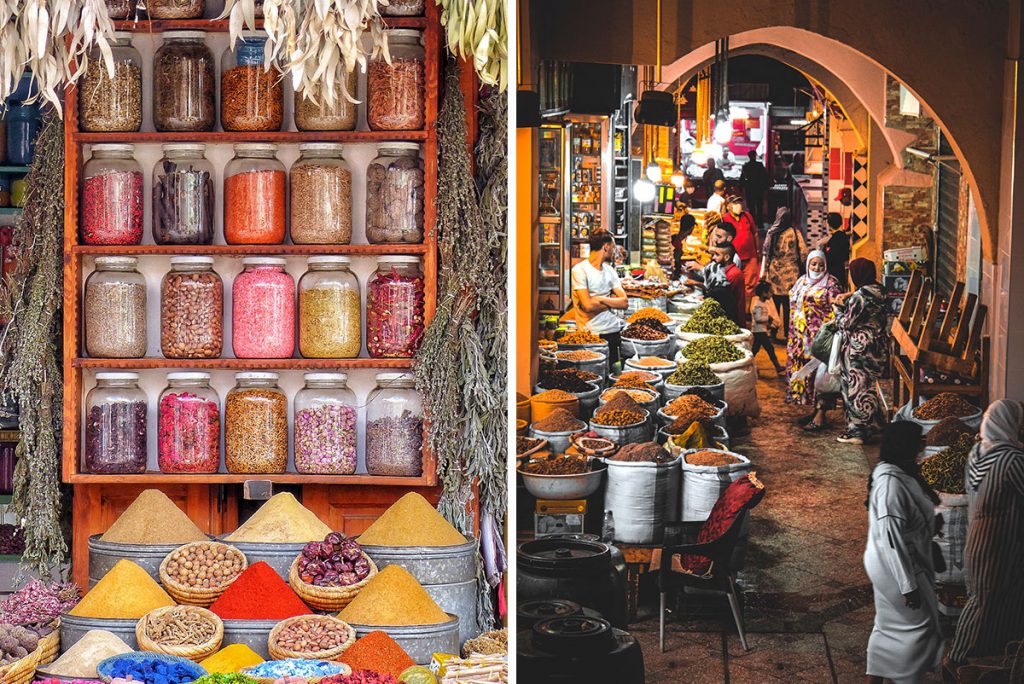
What to Eat in Morocco
Traditional Moroccan food is steeped in rich flavors and includes dishes like couscous, a crushed durum wheat that’s typically topped with beef or lamb and mixed with vegetables like onions, olives, bell peppers, and tomatoes. Another traditional favorite is tanjia, a communal dish that’s a mix of meat, herbs, and spices such as cumin and turmeric, slow-cooked in a clay pot buried in smoldering ashes. However, the best-known food in Morocco is likely tagine. This savory stew brings together meat, vegetables, and dried fruit that sometimes includes plums, dates, and cherries in an earthenware pot—one with a cone-shaped lid used to trap the rising moisture as it cooks, resulting in a dish that’s tender, flavorful, and juicy. Djaj Mqualli, a chicken tagine made with preserved lemons and olives, is especially delectable.
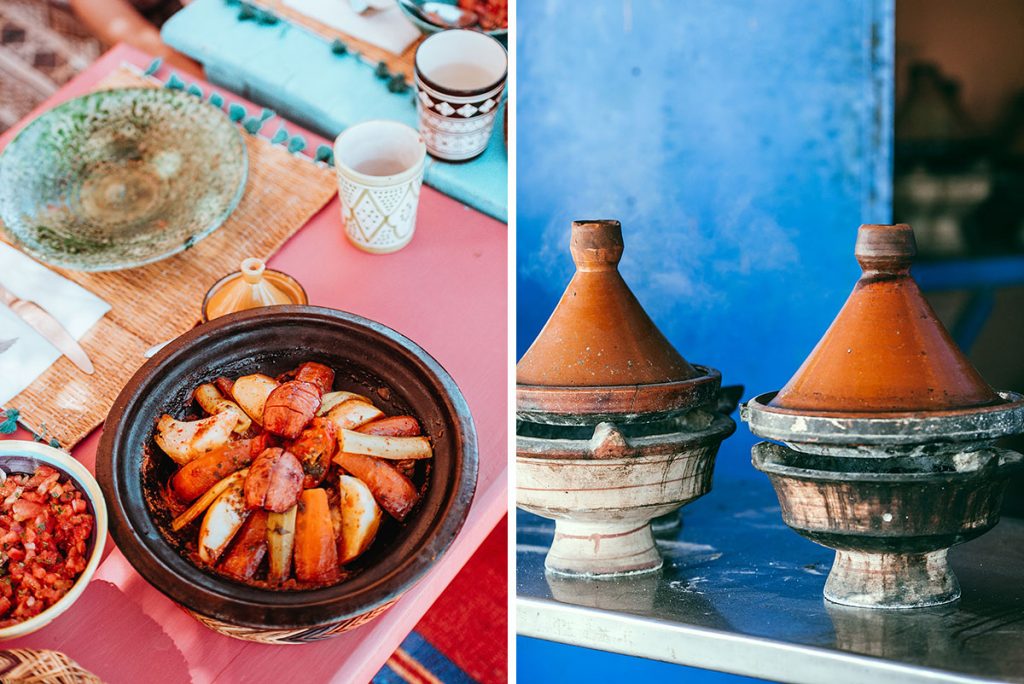
Meals might begin with dishes like zaalouk, a flavor-filled cooked salad of grilled eggplant and tomatoes that’s commonly served with loaves of khobz bread. In fact, bread is a staple at almost every Moroccan meal: at breakfast, for instance, spiced flatbread served with a side of argan oil—an essential in most local kitchens—is often par for the course. Brick-lined communal ovens exist in most towns and villages, and bakeries stocked with sweets like eclairs and almond baklava are equally omnipresent.
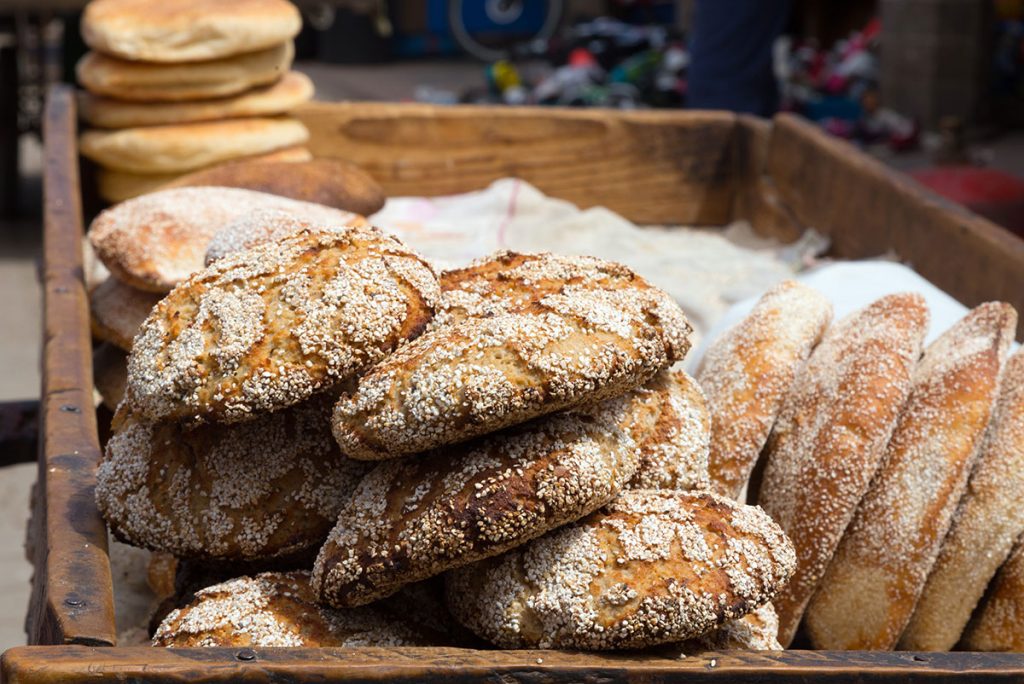
During the month-long Ramadan holiday, each dawn-to-dusk fast is broken with an ftour meal. Bowls of hearty harira, a spiced vegetable soup with chickpeas, satisfy cravings, along with dried dates and figs, and other sweets.
Seafood specialties are the norm in Morocco’s coastal regions. Here, open-air restaurants whip up plates of chermoula-marinated mackerel and pastilla, a pie of crispy, filo-like pastry stuffed with chunks of whitefish and shrimp, all easily enjoyed while delighting in the waterfront breeze.
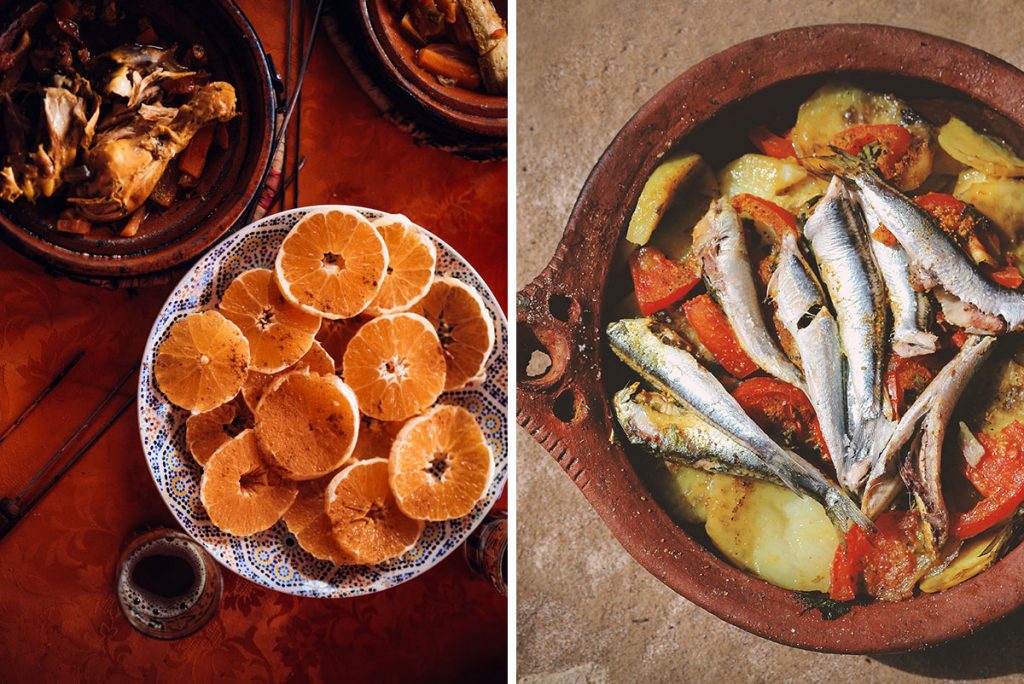
Where to Eat in Morocco
Many of the restaurants in Morocco are as spectacular as the food. Some, like the kitchen at Ksar El Kabbaba, serving organic vegetables and seasonal fruits from local farms, are situated within remarkable natural settings (in this case, an oasis palm grove); others are housed in meticulously restored riads that serve up a smorgasbord of culinary delights. At spots such as the family-owned La Maison Bleue (which also offers cooking classes) in Fès, traditional Moroccan cuisine derives from recipes passed down through generations. Another Fès favorite is Dar Roumana, an acclaimed restaurant serving up French-Moroccan fusion dishes, like seared umbrina fish with saffron, prawn, and crayfish sauce, in the tiled courtyard of a traditional Fassi riad that’s been stunningly restored. For an open-air rooftop experience, La Terrasse des Épices overlooks the bustle of Marrakech’s Cherifia Souk—where Moroccan souvenirs and contemporary artworks abound—and offers a laid-back setting for savoring plates of olive oil candied salmon and basking in panoramic city views. If it’s a personalized culinary adventure you’re after, Dar Ahlam (located between the oasis town of Skoura and the Atlas Mountains) arranges private meals in an array of jaw-dropping settings, from dinner deep within a candlelit 19th-century fortress to a picnic upon the banks of a secret celadon-colored lake.
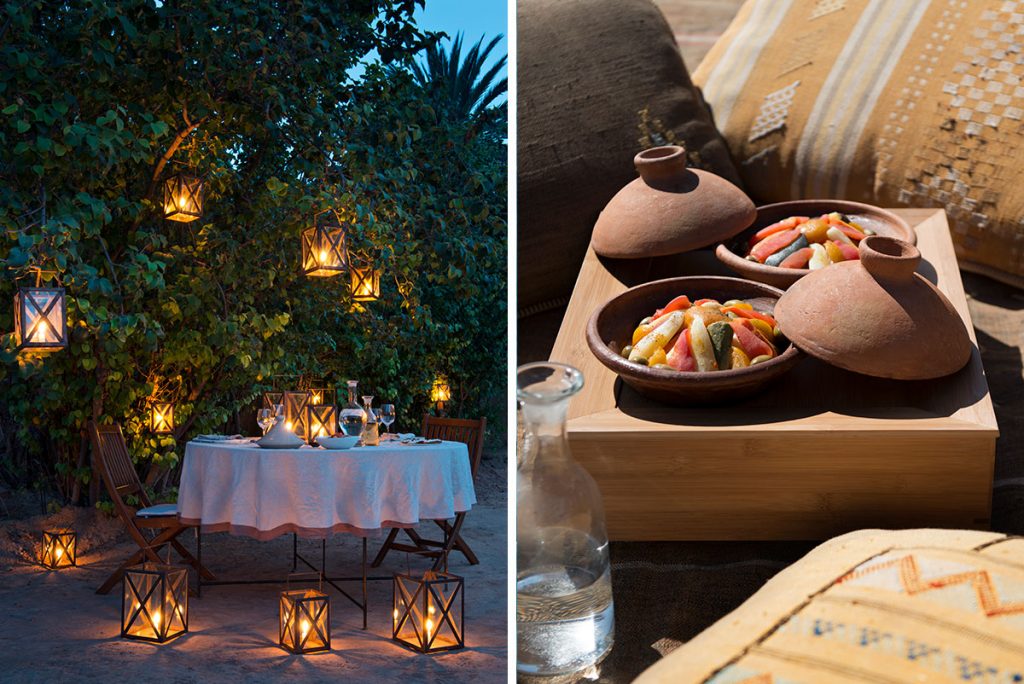
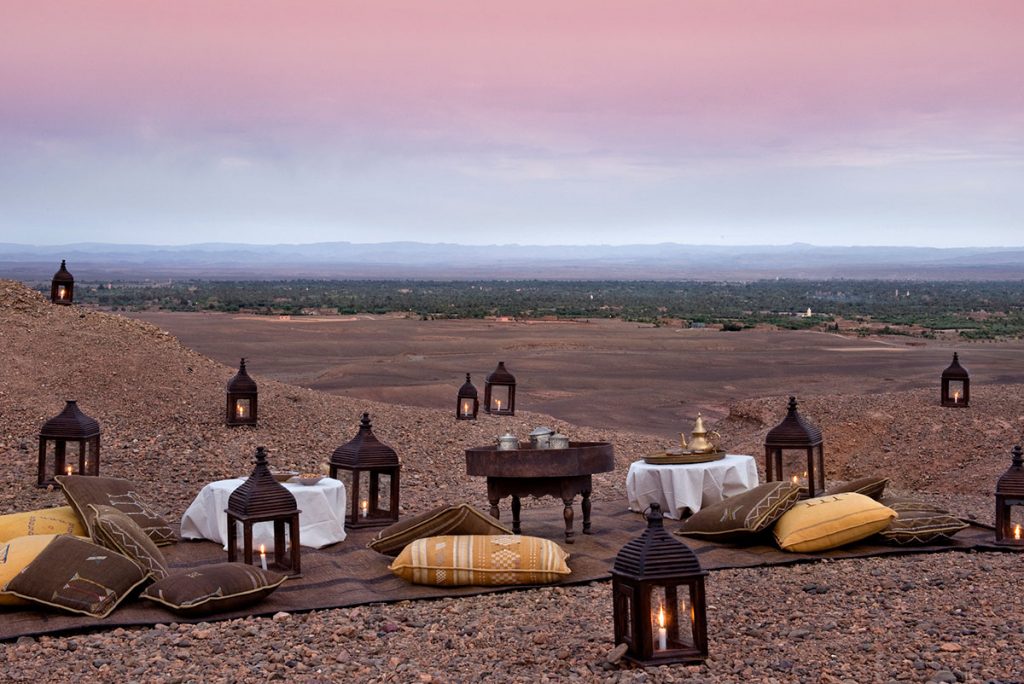
Spend free time dining on helpings of méchoui (spit-roasted lamb) and sliced oranges sprinkled with ground cinnamon, powdered sugar, and orange flower water, at exclusive eateries like Marrakech’s Dar Zellij; or embark on a Moroccan food tour amid the sprawling souks and bustling medina of medieval Fès—where street vendors dole out delicacies like m’semen, crepe-like flatbread brimming with minced meat or drizzled with honey. There are a myriad of ways to immerse yourself in the culinary offerings of this legendary country. Just remember to come hungry, and dig in!
* * * * *
To learn more about GeoEx’s Morocco luxury tours and sample some of these traditional foods and places, call our travel experts at 888-570-7108.
Best article Thank you for sharing 😊
Great post thank you for sharing

